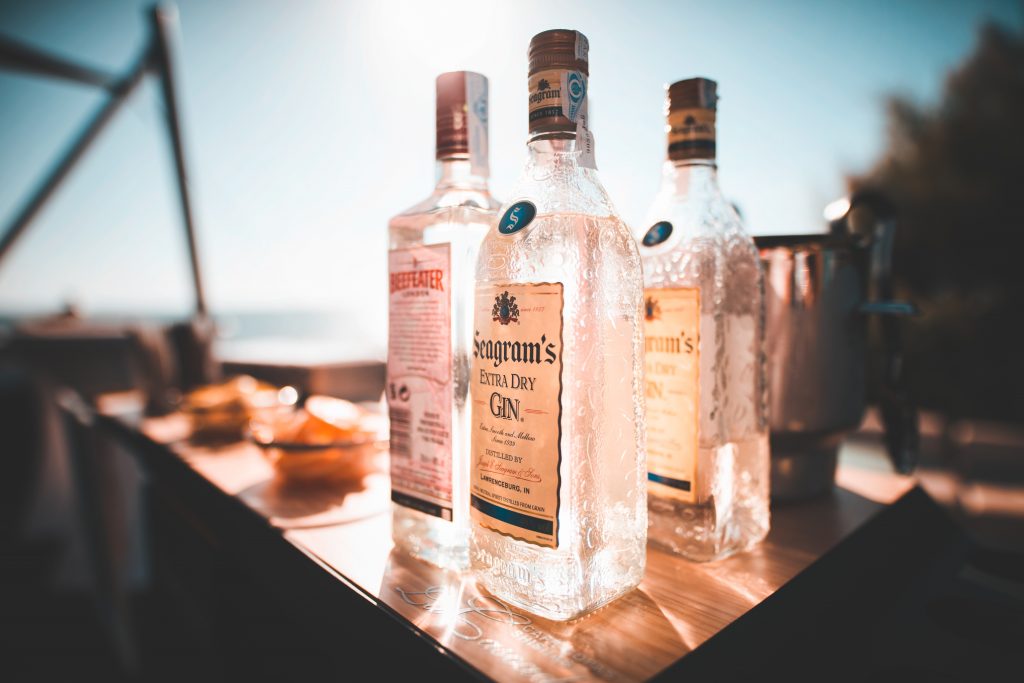THE SIP BLOG

The Different Types of Gin and What Makes Them Special
There are several types of gin spirit aficionados can enjoy. They’re all unique in their own way and can be mixed into some of the most well-known cocktails in the world like the Martini and the Negroni. But what makes them similar and unique from each other? Find out below!
London Dry Gin
This gin originates from England but due to its popularity, it’s now made all over the world. It’s commonly used in Gin and Tonics and the Martini.
What makes it unique? London Dry Gin has strong juniper flavors, which is the berry used for its trademark taste. It’s also jam-packed with fresh citrus notes. This is why a lemon twist really brings out the citrus elements of a Martini. Dry gins are known for not having artificial flavors like sweeteners. It’s a very natural presentation of gin.
Old Tom Gin
Originally known as “bathtub gin” in the 18th Century because it was commonly made in residential homes, this type of gin wasn’t known for its quality for a long time. The quality was terrible, in fact, sweetening agents or licorice were common ingredients used to make it taste better. Currently, it’s nothing like its primordial counterpart.
What makes it unique? There’s a larger amount of licorice used in Old Tom Gin which makes it sweeter than the standard gin. However, the sweetness won’t resemble the exact taste of licorice. It’s more robust in flavor than London Dry Gin and that makes ideal for mixed drinks (especially those with bitter qualities) and cocktails that were created before the Prohibition Era.
Plymouth Gin
This is gin can only be made in Plymouth, England. Unlike its counterpart London Dry Gin, which can be distilled anywhere in the world, Plymouth Gin is incredibly restricted to this southern port city that is located 190 miles from London.
What makes it unique? This version resembles London Dry Gin but it’s drier and has earthier elements. It’s also a bit sweeter with more citrus flavors. This gin typically has seven botanical ingredients: cardamom, coriander seeds, orris root, dried orange peels, juniper, and Angelica root. Both roots provide the earthier notes. The Plymouth gin works well with the Negroni.

As original as gin can get, Genever gin was first created during the 16th century. Gin actually begins as a malt wine spirit, which is where most of its flavor derives. The grains are fermented for five days until it becomes a mash; this is similar to whiskey’s distilling process. The distillers will then add various types of botanicals.
What makes it unique? In this case, the Genever gin does not have a predominant juniper flavor. It’s maltier than the other types. Common ingredients include ginger, cloves, caraway, and nutmeg. There won’t be any citrus notes that are found in Plymouth and London dry gin. The end product is richer than Old Tom and is commonly considered by many to be the best version for mixing drinks.
Navy Strength Gin
“Navy Strength” essentially translates to a London Dry gin that’s overproof. This version was once in common rotation by the British Royal Navy. It’s a powerful spirit that packs a punch at 57% ABV. In comparison, London dry gin usually peaks at 40 to 45%.
What makes it unique? Think of London dry gin on steroids. It’s intense and many distillers strive to create a balance between its flavors and high ABV. Most will say it’s just like London dry, but it’ll put hair on your chest.
Now that you know the different types of gin and what makes them special, make sure to read our article on the “The Top Health Benefits of Gin” for more fascinating tidbits on gin and find out why it’s beloved by so many!
And to stay up to date on all things SIP Awards, remember to sign up for our newsletter to receive news as well as important upcoming dates! To see the full list of 2019 medalists, make sure to visit our results page here and make your next spirits purchase “Consumer Approved”!




